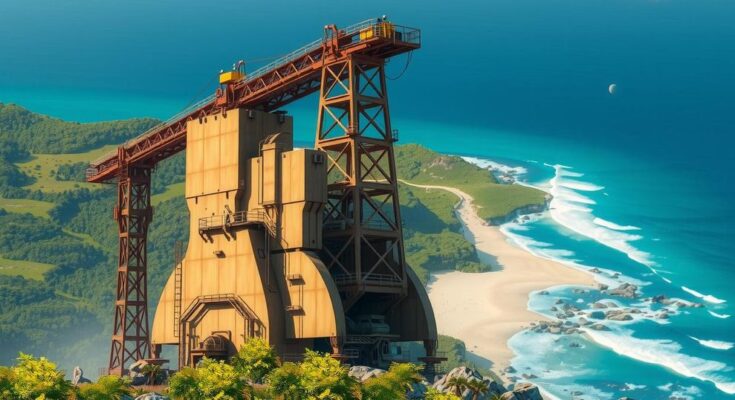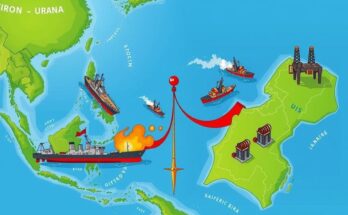In Senegal, the world’s largest mining dredger operated by Eramet is causing significant ecological damage along the fertile coastal region. Thousands of farmers have been displaced, leading to severe local grievances concerning compensation and loss of livelihood. President Faye’s recent advocacy for oversight contrasts with the company’s claims of responsible operation, raising pressing questions about the sustainability of such mining practices.
In Senegal, a colossal mining dredger, recognized as the largest in the world, is aggressively extracting zircon while severely damaging the country’s fertile coastal region, known for its vegetable production. The immense 23-kilometer-long scar carved by this giant rig is discernible from space. It operates in a cacophony, sucking in vast quantities of mineral sands hourly and is advancing over the picturesque Lompoul dunes, a celebrated tourist destination along Senegal’s Atlantic coast.
The local population, including thousands of farmers displaced over the last decade, is enduring significant challenges as a result of this mining activity conducted by French company Eramet. The company maintains that it operates responsibly and plans to escalate mining operations despite claims from locals of ecological devastation. Gora Gaye, mayor of Diokoul Diawrigne, has lamented the resultant despair among the communities affected, emphasizing, “broken promises, intimidation, and destruction of our ecosystem”.
President Bassirou Diomaye Faye has recently advocated for better oversight concerning local benefits from mining. This reflects a growing coalition of tourism operators, farmers, and community leaders urging for a suspension of mining activities. EGC, the local subsidiary responsible for extraction, asserts compliance with agreements and describes compensation packages for displaced individuals as substantially above national guidelines.
However, locals express continued grievances regarding inadequate compensation for lost livelihoods and the irreversible impact on their lands. They highlight that former fertile areas, once thriving food sources, have been reduced to barren landscapes, as noted by Ibrahima Ba, who stated that conditions have declined dramatically since displacement. Meanwhile, EGC claims the project has substantially contributed to the Senegalese economy, yet many locals contend with deteriorating living standards.
The plight of displaced families is underscored by individuals like Omar Keita, who reveals struggles faced since leaving their homes. Although EGC has facilitated new settlements and infrastructure, frustrations persist, with communities demanding restoration of their previous land and living conditions. The mayor has called for a moratorium on the mining project to facilitate investigation into ecological damages, while EGC advocates against such measures, arguing for the economic benefits of continued operations.
Despite the contrasting narratives between local sentiments and corporate assurances, the mining activities persist, raising significant questions regarding environmental sustainability and the long-term impacts on Senegal’s communities and ecosystems.
The situation surrounding the mining dredger in Senegal sharply contrasts corporate claims of economic benefits with the harsh realities faced by displaced communities. As local leaders and residents call for accountability, the potential for long-lasting damage to the environment and livelihoods raises urgent concerns about the balance between economic development and ecological preservation. The ongoing demands for transparency and a halt to operations highlight the complexities of resource extraction in sensitive environments, necessitating serious consideration of the rights and well-being of affected populations.
Original Source: www.kpvi.com




